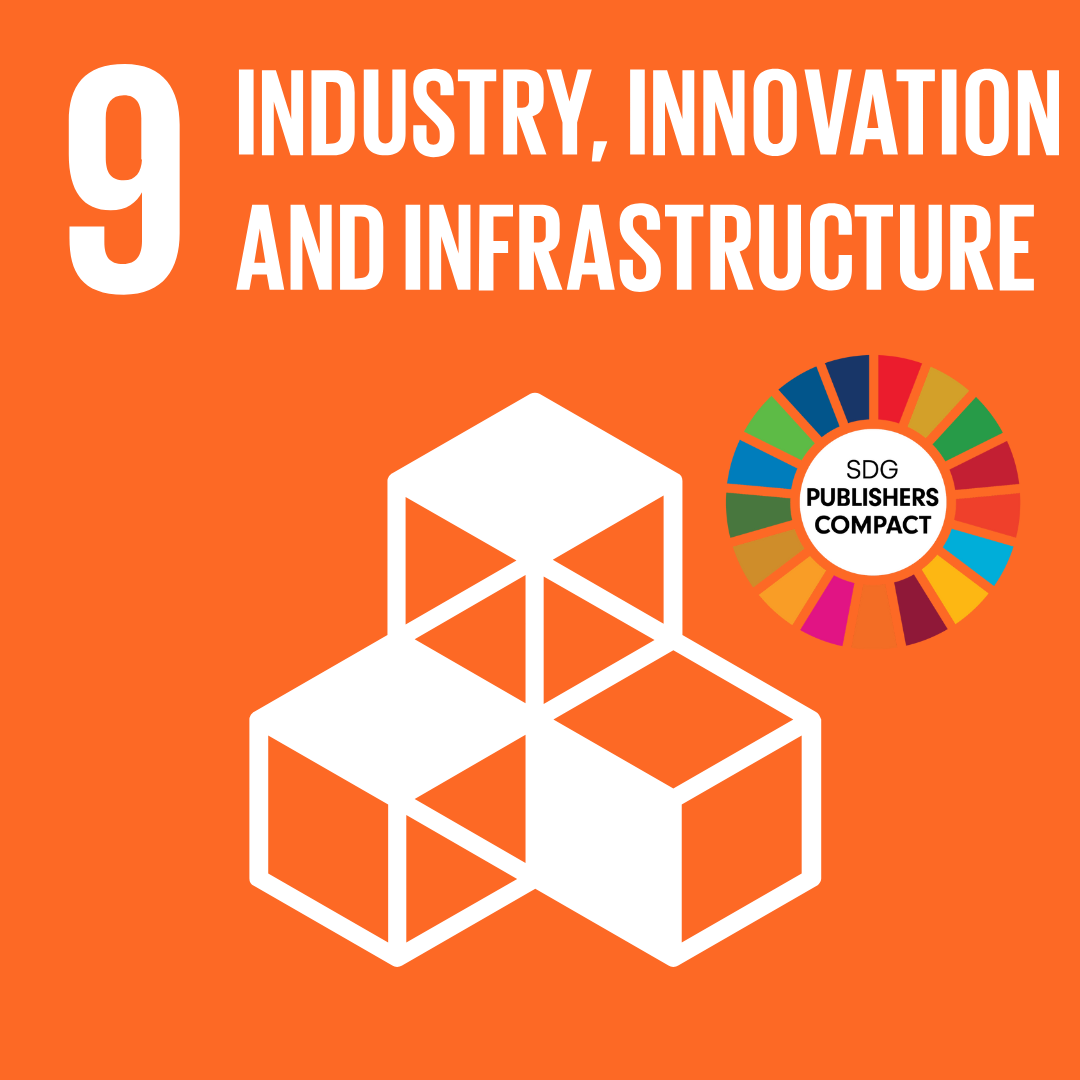Blockchain integration for enhancing sustainable development and resilience of international supply chains amid economic sanctions
DOI:
https://doi.org/10.37497/2965-7393.SDGs-Countries.v6.nsdgs.59Palabras clave:
Blockchain, International Supply Chains, Economic Sanctions, Sustainable Development, Cross-border PaymentsResumen
Objective: This study aims to develop and test methodological approaches for analyzing the prospects of macroeconomic growth in the Russian Federation through the integration of blockchain technologies in export-import operations. The research focuses on how blockchain can enhance international payment systems and stimulate international trade under economic sanctions.
Methodology: The study employs a descriptive express analysis and a system of recursive equations to explore the dynamics between cross-border cash flows and GDP growth. Data from the World Bank and the Central Bank of Russia are used to model the impact of transnational cash flow variations on the GDP of the Russian Federation. The methodological framework includes constructing and solving a system of econometric equations to predict economic outcomes based on changes in cash flow dynamics.
Results: The findings reveal that a 1% reduction in transnational cash flows could potentially decrease the GDP of the Russian Federation by 0.45%. The introduction of blockchain technologies in cross-border payment systems is shown to mitigate these risks by providing a secure and efficient alternative to traditional international payment methods. This integration not only enhances the resilience of supply chains but also supports sustainable economic development amid sanctions.
Conclusions: The study concludes that blockchain technology offers significant potential to sustain international supply chains and economic stability under sanctions. By ensuring secure and efficient cross-border transactions, blockchain can help localize risks associated with disruptions in international payment systems, thereby fostering sustainable economic growth. The research underscores the importance of adopting innovative technologies to navigate economic challenges and enhance the resilience of national economies.
Citas
Allen, D. W. E., Berg, C., Davidson, S., Novak, M., & Potts, J. (2019). International Policy Coordination for Blockchain Supply Chains. Asia & the Pacific Policy Studies, 6(3), 367-380. http://dx.doi.org/10.1002/app5.281
Allessie, D., Sobolewski, M., & Vaccari, L. (2019). Blockchain for Digital Government. EUR 29677 EN, Luxembourg: Publications Office of the European Union.
Bank of Russia. (2023). Cross-Border Remittances of Individuals in 2021. Retrieved from https://cbr.ru/statistics/macro_itm/svs/TGO_obz/crossborder_ind_2021
Bas, M., & Strauss-Kahn, V. (2014). Does Importing More Inputs Raise Exports? Firm-Level Evidence from France. Review of World Economics, 150(2), 241-275.
Boar, C., & Wehrli, A. (2021). Ready, Steady, Go? Results of the Third BIS Survey on Central Bank Digital Currency. BIS Papers, 114. Retrieved from https://www.bis.org/publ/bppdf/bispap114.pdf
Boar, C., Holden, H., & Wadsworth, A. (2020). Impending Arrival – A Sequel to the Survey on Central Bank Digital Currency. Bank for International Settlements, BIS Papers, 107. Retrieved from https://www.bis.org/publ/bppdf/bispap107.pdf
Copigneaux, B., Vlasov, N., Bani, E., Tcholtchev, N., Lämmel, P., Fuenfzig, M., et al. (2020). Blockchain for Supply Chains and International Trade. Report on Key Features, Impacts, and Policy Options. Brussels: European Union.
Deringer, H., Erixon, F., Lamprecht, P., & van der Marel, E. (2018). The Economic Impact of Local Content Requirements: A Case Study of Heavy Vehicles. ECIPE Occasional Paper 1/2018. Retrieved from https://ecipe.org/publications/the-economic-impact-of-local-content-requirements/
Dubrovskaya, E. S. (2022). Russian Economy under Sanctions: Current Situation and Prospects for Innovative Development. Creative Economy, 16(11), 4553-4564. https://doi.org/10.18334/ce.16.11.116637
Elshin, L. A. (2017). Comparative Analysis of Cyclic Fluctuations of Regional Economic Systems: Modeling, Identification, Forecasting. Bulletin of the Institute of Economics of the Russian Academy of Sciences, 4, 138-156.
Engert, W., & Fung, B. S. C. (2017). Central Bank Digital Currency: Motivations and Implications. Bank of Canada Staff Discussion Paper 2017-16. Retrieved from https://www.bankofcanada.ca/wp-content/uploads/2017/11/sdp2017-16.pdf
Ganne, E., & Patel, D. (2019). Blockchain & DLT in Trade: A Reality Check. World Trade Organization (WTO); Trade Finance Global (TFG).
Glaser, F., Hawlitschek, F., & Notheisen, B. (2019). Blockchain as a Platform. In H. Treiblmaier & R. Beck (Eds.), Business Transformation through Blockchain (pp. 121-143). Cham: Palgrave Macmillan.
Kochergin, D. (2021). Digital Currencies of Central Banks: World Experience. World Economy and International Relations, 65(5), 68-77. https://doi.org/10.20542/0131-2227-2021-65-5-68-77
Masalsky, M. G. (2022). Economic Sanctions. The Impact of Economic Sanctions on the Russian Federation. Economics and Society, 4-3(95), 95-97.
Náñez Alonso, S. L., Jorge-Vázquez, J., & Forradellas, R.F.R. (2021). Central Banks Digital Currency: Detection of Optimal Countries for the Implementation of a CBDC and the Implication for Payment Industry Open Innovation. Journal of Open Innovation: Technology, Market, and Complexity, 7(1), art. no. 72. https://doi.org/10.3390/joitmc7010072
Osipov, V. S., Zeldner, A. G., Pankova, S. V., Novitsky, N. A., Popov, V. V., Tsypin, A. P., et al. (2017). Economics of Import Substitution: Assessment of the Impact of the Structure of Foreign Trade Flows on the Development of Economic Potential and Import Substitution in the Russian Federation. Intellect. Innovation. Investments, 7, 31-44.
Safiullin, M. R., & Elshin, L. A. (2023). Sanctions Pressure on the Russian Economy: Ways to Overcome the Costs and Benefits of Confrontation in the Framework of Import Substitution. Finance: Theory and Practice, 27(1), 150-161. https://doi.org/10.26794/2587-5671-2023-27-1-150-161
Safiullin, M. R., Elshin, L. A., & Prygunova, M. I. (2014). Volatility and Competitiveness of Regions in the Context of Foreign Policy and Market Changes (on the Example of the Regions of the Volga Federal District). Bulletin of the Russian University of Economics named after G.V. Plekhanov, 12(78), 115-127.
Safiullin, M. R., Savelichev, M. V., & Elshin, L. A. (2019). Place and Evolution of Blockchain Technologies in the System of Economic
Development. Scientific Review: Theory and Practice, 9(8), 1191-1200. https://doi.org/10.35679/2226-0226-2019-9-8-1191-1200
Sakharov, D. M. (2021). Central Bank Digital Currencies: Key Features and Impact on the Financial System. Finance: Theory and Practice, 25(5), 133-149. https://doi.org/10.26794/2587-5671-2021-25-5-133-149
Sidorenko, E. (2021). Digital Currency of Central Banks Economic Scenarios and Forecasts. International Processes, 19(2), 151-165. https://doi.org/10.17994/IT.2021.19.2.65.8
Stone, S., Messent, J., & Flaig, D. (2015). Emerging Policy Issues: Localization Barriers to Trade. OECD Trade Policy Papers, 180. https://doi.org/10.1787/5js1m6v5qd5j-en
Tapscott, D., & Tapscott, A. (2017). How Blockchain Will Change Organizations. MIT Sloan Management Review, 58(2), 10-13.
Unified Interdepartmental Information and Statistical System (EMISS). (2023). Import of Goods and Services. Retrieved from https://www.fedstat.ru/indicator/31057
World Bank. (2023). Migration and Remittances. Retrieved from https://www.worldbank.org/en/topic/labormarkets/brief/migration-and-remittances
Zhang, T., & Huang, Z. (2021). Blockchain and Central Bank Digital Currency. ICT Express, 8(2), 264-270. https://doi.org/10.1016/j.icte.2021.09.014














